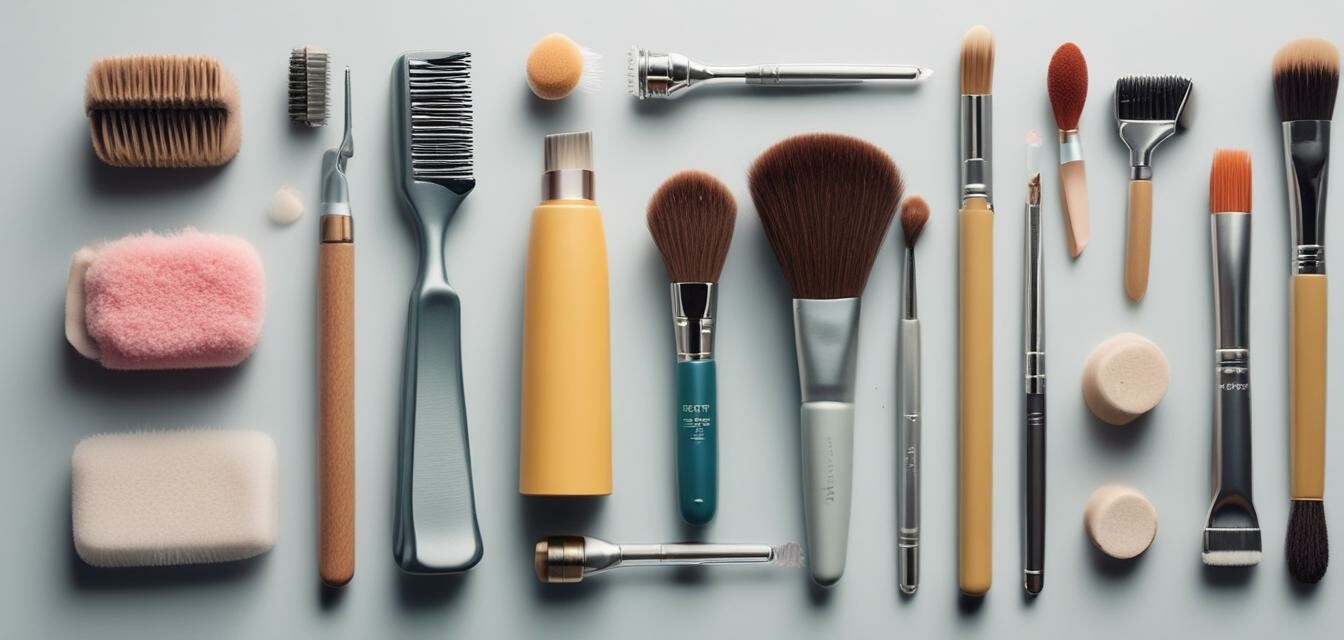
This article was generated using AI and is based on real customer reviews from the Amazon platform. It contains affiliate links, meaning we may earn a commission—at no extra cost to you. As Amazon Associates, we earn from qualifying purchases.
How often should you clean each beauty tool?
Maintaining cleanliness in your beauty routine is essential for ensuring that your beauty tools work effectively and keep your skin healthy. This article provides a detailed schedule for cleaning various beauty tools, ensuring optimal hygiene practices in your routine.
Key takeaways
- Regular cleaning of beauty tools prevents bacteria build-up.
- Different tools have different cleaning frequencies.
- Proper maintenance extends the life of your beauty tools.
- Using the right cleaning methods is crucial for hygiene.
- Implementing a cleaning schedule can simplify your routine.
Importance of cleaning beauty tools
Cleaning your beauty tools is essential not just for hygiene but also for the overall effectiveness of your beauty regimen. Dirty tools can lead to skin irritations and breakouts, undermining all your efforts to care for your skin. Following a regular cleaning schedule, tailored to the specific needs of each tool, can make an immense difference.
Recommended cleaning schedule
| Beauty Tool | Cleaning Frequency | Preferred Cleaning Method |
|---|---|---|
| Makeup Brushes | Once a week | Use brush cleaner or mild soap |
| Sponges and Puffs | After each use | Clean with soap and water |
| Facial Tools | Once a week | Disinfect with alcohol wipes |
| Nail Tools | After each use | Soak in disinfectant |
| Cloth and Towel Sterilizers | Every month | Follow the manufacturer’s instructions |
| Electric Tool Cleaners | Every use | Follow clean-up guidelines provided |
Best practices for cleaning each type of tool
Makeup brushes
Using a brush cleaner or mild soap is effective for cleaning makeup brushes. Here's a quick guide:
- Wet the bristles with lukewarm water.
- Apply a small amount of cleaner.
- Rinse and reshape the bristles.
Sponges and puffs
For sponges, clean them after each use:
- Soak the sponge in warm, soapy water.
- Squeeze gently to remove makeup residue.
- Rinse thoroughly and let dry.
Facial tools
Disinfect facial tools using alcohol wipes:
- Wipe the tool's surface thoroughly until clean.
- Allow the surface to dry completely before storing.
Nail tools
Nail tools need to be soaked after each use:
- Fill a small bowl with disinfectant.
- Soak the tools for the recommended time.
- Rinse with warm water and let air dry.
More tips for maintaining your beauty tools
In addition to cleaning, here are some essential tips for maintaining your beauty tools:
- Keep your tools in a clean, dry place to avoid contamination.
- Replace any worn-out brushes or sponges regularly.
- Store tools in a designated case to avoid damage.
- Always follow product labels for specific cleaning instructions.
- Stay consistent with your cleaning schedule for best results.
Conclusion
Establishing a regular cleaning schedule for your beauty tools not only prevents the accumulation of dirt and bacteria but also enhances the effectiveness of your beauty routine. By understanding the specific cleaning needs of each tool, and implementing the best practices discussed in this article, you can ensure that your beauty tools remain in top condition, prolonging their life and ensuring you achieve the best results every time you use them.
Pros
- Improved hygiene and skin health.
- Enhanced performance of tools.
- Longer lifespan for your beauty tools.
Cons
- Requires time and effort to maintain.
- May require specialized cleaning products.
Additional resources
Check out our other articles on cleaning tips and tools: